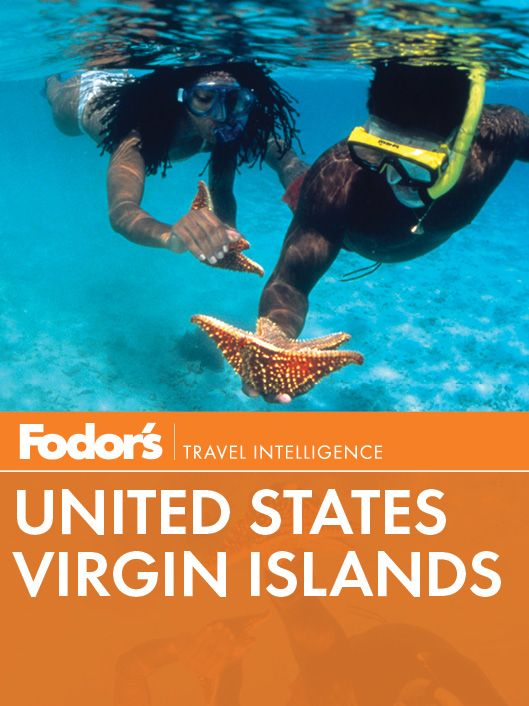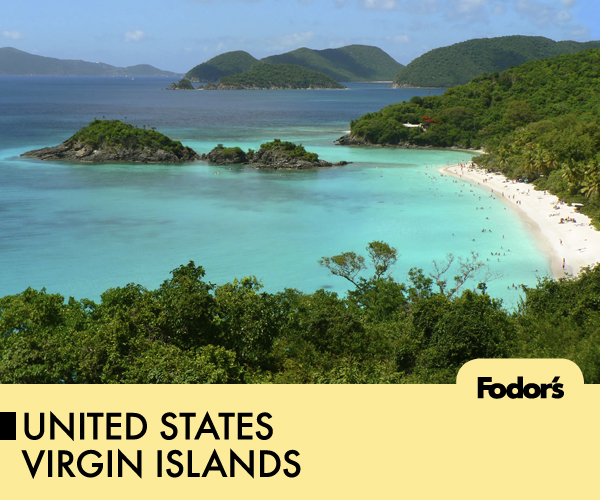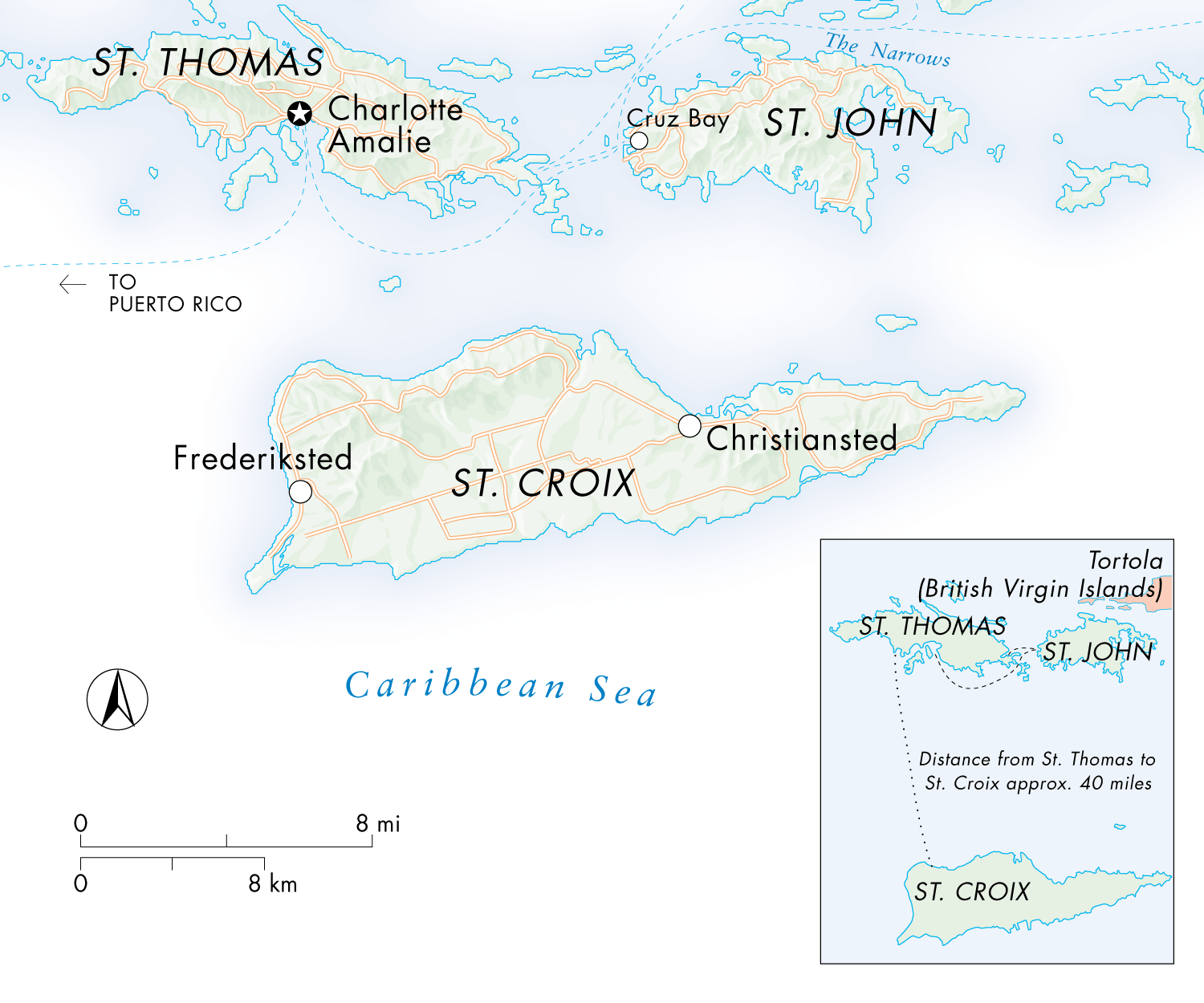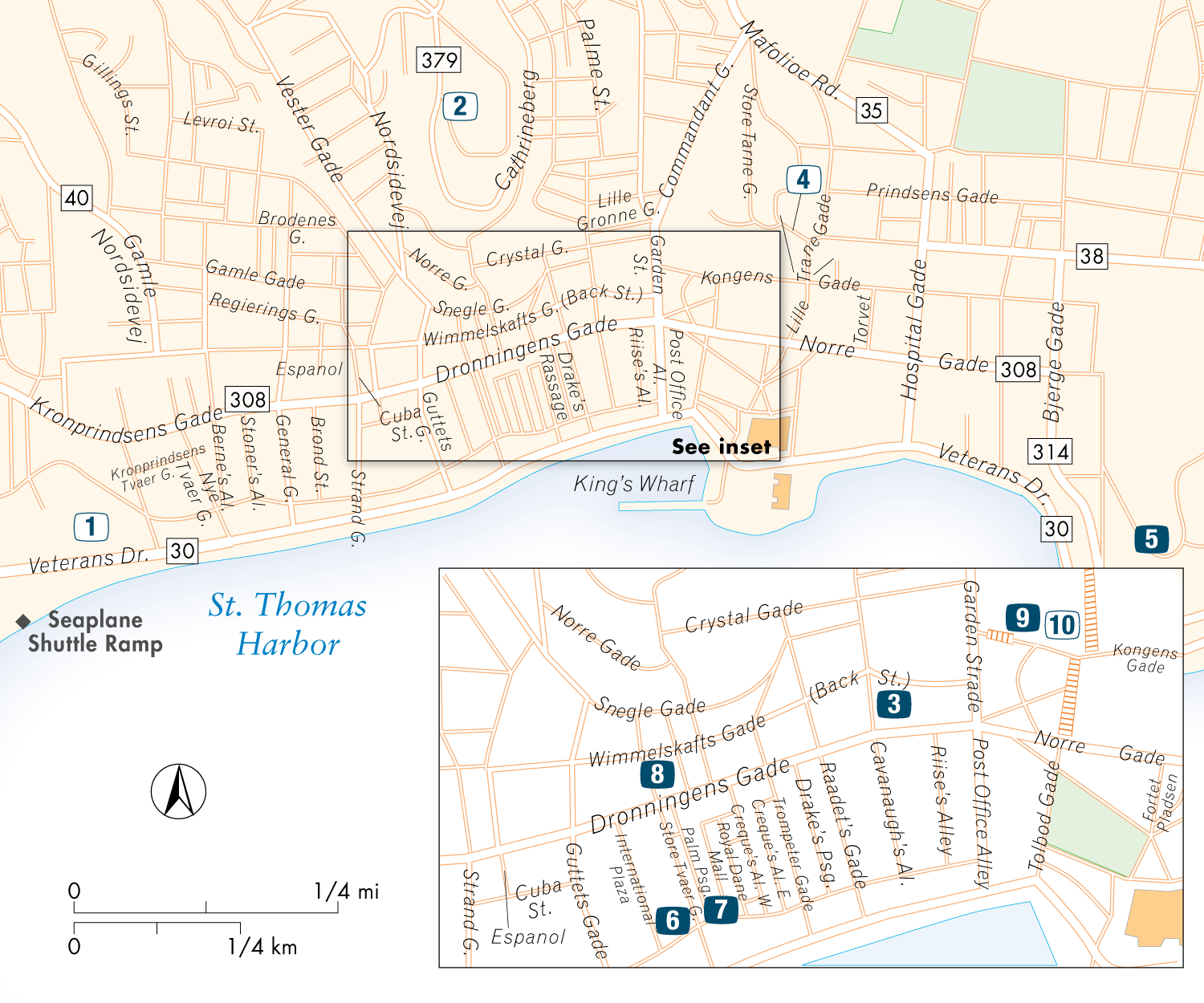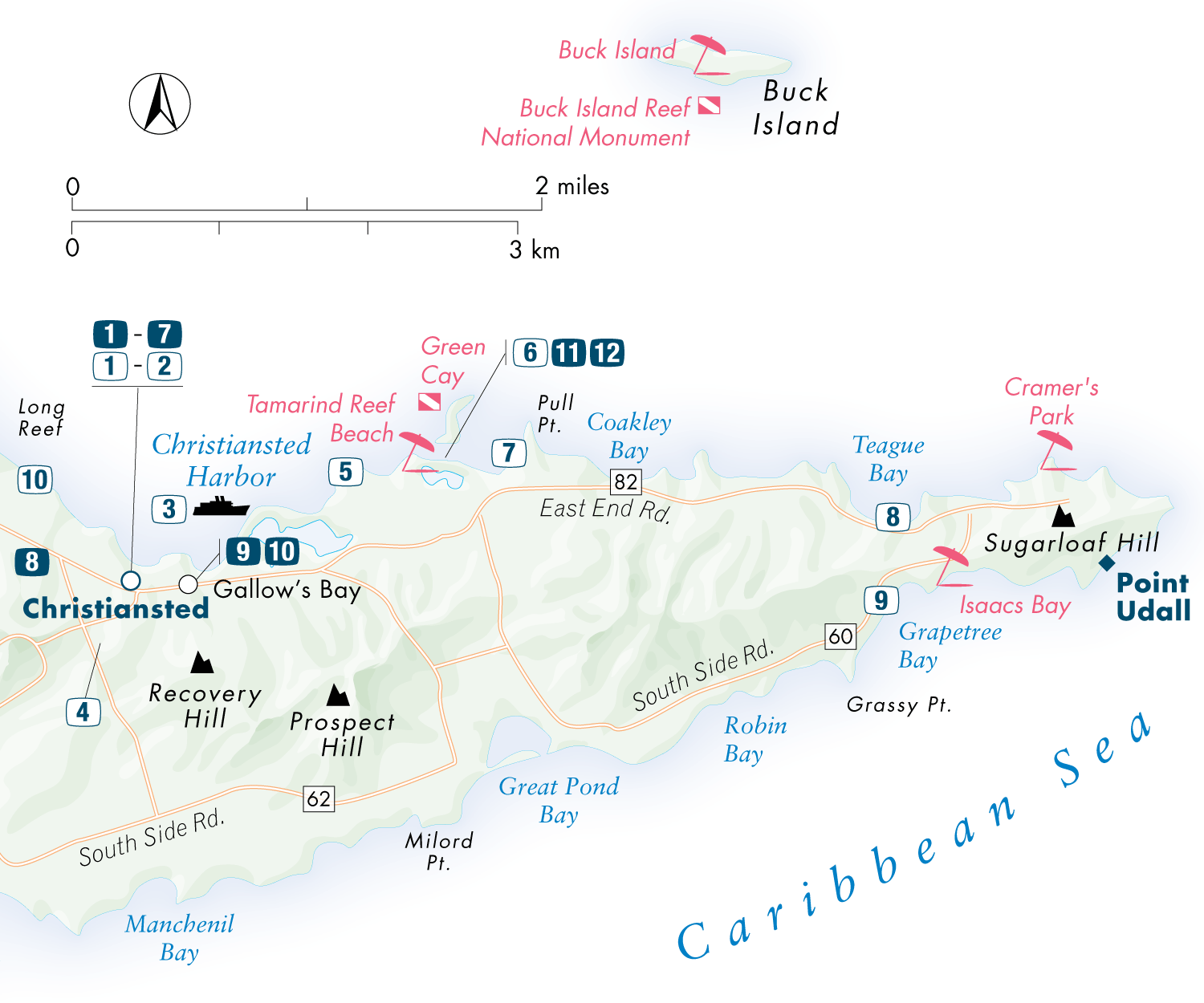WELCOME TO UNITED STATES VIRGIN ISLANDS
The U.S. Virgin IslandsSt. Thomas, St. John, and St. Croixmay fly the American flag, but Americas Paradise is in reality a delightful mix of the foreign and familiar that offers something for everyone to enjoy. The history, beautiful beaches, myriad activities, good food, and no-passport-required status make the Virgin Islands an inviting beach destination for many Americans.
With three islands to choose from, youre likely to find your piece of paradise. Check into a beachfront condo on the east end of St. Thomas; then eat burgers and watch football at a beachfront bar and grill. Or stay at an 18th-century plantation greathouse on St. Croix, dine on everything from local food to Continental cuisine, and go horseback riding at sunrise. Rent a tent or a cottage in the pristine national park on St. John; then take a hike, kayak off the coast, read a book, or just listen to the sounds of the forest. Or dive deep into island time and learn the art of limin (hanging out, Caribbean-style) on all three islands.
History books give credit to Christopher Columbus for discovering the New World. In reality, the Virgin Islands, like the rest of the isles in the Caribbean chain, were populated as long ago as 2000 bc by nomadic waves of seagoing settlers as they migrated north from South America and eastward from Central America and the Yucatn Peninsula.
Columbus met the descendants of these original inhabitants during his second voyage to the New World, in 1493. He anchored in Salt River, a natural bay west of what is now Christiansted, St. Croix, and sent his men ashore in search of fresh water. Hostile arrows rather than welcoming embraces made for a quick retreat. In haste, Columbus named the island Santa Cruz (Holy Cross) and sailed north. He eventually claimed St. John, St. Thomas, and what are now the British Virgin Islands for Spain and at the same time named this shapely silhouette of 60-some islands Las Once Mil Virgenes, for the 11,000 legendary virgin followers of St. Ursula. Columbus believed the islands barren of priceless spices, so he sailed off, leaving more than a centurys gap in time before the next Europeans arrived.
Pioneers, planters, and pirates from throughout Europe ushered in the era of colonization. Great Britain and the Netherlands claimed St. Croix in 1625. This peaceful coexistence ended abruptly when the Dutch governor killed his English counterpart, thus launching years of battles for possession that would see seven flags fly over this southernmost Virgin isle. Meanwhile, St. Thomass sheltered harbor proved a magnet for pirates such as Blackbeard and Bluebeard. The Danes first colonized the island in 1666, naming their main settlement Taphus for its many beer halls. In 1691 the town received the more respectable name of Charlotte Amalie in honor of Danish king Christian Vs wife. It wasnt until 1718 that a small group of Dutch planters raised their countrys flag on St. John. As on its sibling Virgins, a plantation economy soon developed.
Plantations depended on slave labor, and the Virgin Islands played a key role in the triangular route that connected the Caribbean, Africa, and Europe in the trade of sugar, rum, and human cargo. By the early 1800s a sharp decline in cane prices because of competing beet sugar and an increasing number of slave revolts motivated Governor General Peter von Scholten to abolish slavery in the Danish colonies on July 3, 1848. This holiday is now celebrated as Emancipation Day.
After emancipation, the islands economy slumped. Islanders owed their existence to subsistence farming and fishing. Meanwhile, during the American Civil War, the Union began negotiations with Denmark for the purchase of the Virgin Islands in order to establish a naval base. However, the sale didnt happen until World War I, when President Theodore Roosevelt paid the Danes $25 million for the three largest islands; an elaborate Transfer Day ceremony was held on the grounds of St. Thomass Legislature Building on March 31, 1917. A decade later, Virgin Islanders were granted U.S. citizenship. Today the U.S. Virgin Islands is an unincorporated territory, meaning that citizens govern themselves and vote for their own governors, but cannot vote for president or congressional representation.
Nowadays, Virgin Islanders hail from more than 60 nations. Descendants of African slaves are the largest segment of the population, so its not surprising that they also provide the largest percentage of workers and owners of restaurants, resorts, and shops. The Danish influence is still strong in architecture and street names. Americana is everywhere, too, most notably in recognizable fast-food chains, familiar shows on cable TV, and name-brand hotels. Between this diversity and the wealth that tourism brings, Virgin Islanders struggle to preserve their culture. Their rich, spicy West IndianAfrican heritage comes to full bloom at Carnival time, when celebrating and playing mas (with abandon) take precedence over everything else.
Although the idyllic images of a tropical isle are definitely here, theres evidence, too, of growing pains. Traffic jams are common, a clandestine drug trade fuels crime, andparticularly on St. Thomasthere are few beaches left that arent fronted by a high-rise hotel. Despite fairly heavy development, wildlife has found refuge here. The brown pelican is on the endangered list worldwide but is a common sight in the USVI. The endangered native boa tree is protected, as is the hawksbill turtle, whose females lumber onto the beaches to lay eggs.
TOP ATTRACTIONS
St. Thomas is one of the Caribbeans major sailing centers.
Two-thirds of St. John is a national park that is crisscrossed by excellent hiking trails.
Though Magens Bay on St. Thomas and Trunk Bay on St. John are two of the most perfect beaches youll ever find, St. Croixs West End beaches are fetching in their own way.
Shopping on both St. Thomas and St. Croix is stellar.
St. Thomas is one of the best places to catch Atlantic blue marlin between the months of June and October.
GETTING ORIENTED
About 1,000 mi (1,600 km) from the southern tip of Florida, the U.S. Virgin Islands were acquired from Denmark in 1917. St. Croix, at 84 square mi (218 square km), is the largest of the islands; St. John, at 20 square mi (52 square km), is the smallest. Together, they have a population of around 110,000, half of whom live on St. Thomas.
Restaurants
Hotels


